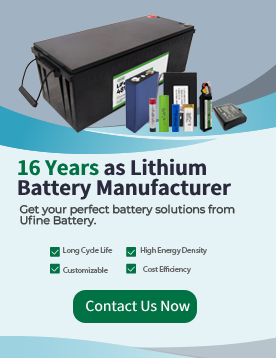A semi-solid-state battery is a next-generation energy storage solution that combines the best properties of traditional lithium-ion and fully solid-state batteries. It offers improved safety, higher energy density, and enhanced performance.
As battery technology rapidly evolves, this hybrid design attracts attention from industries ranging from electric vehicles to renewable energy and consumer electronics. If you’ve ever wondered how your future car, phone, or even home grid storage might be powered—this is the battery tech you need to understand.
This guide explores everything you need to know about semi-solid state batteries, how they compare to other battery types, and why they’re becoming a key player in the energy revolution.
Part 1. What is a semi-solid state battery?
A semi-solid-state battery is rechargeable and sits between lithium-ion and solid-state batteries in design and performance. It uses a thick, gel-like electrolyte instead of the fully liquid electrolyte found in typical lithium-ion batteries or the excellent electrolyte used in solid-state versions.
This hybrid approach aims to improve safety, energy density, and cost-efficiency while avoiding the technical difficulties that have slowed the development of pure solid-state batteries.
In simple terms, it’s a compromise battery technology that delivers many of the benefits of solid-state batteries without being as complex or expensive to make.
Part 2. How does a semi-solid state battery work?
To understand how a semi-solid state battery works, let’s look at the basic structure of any battery. It includes:
- Anode (negative electrode)
- Cathode (positive electrode)
- Electrolyte (medium that allows ions to move)
In a semi-solid state battery:
- The electrolyte is not fully liquid like in lithium-ion batteries.
- It’s not entirely solid, either.
- Instead, it’s a viscous slurry or gel, often made by suspending active materials in a liquid electrolyte with a thickening agent.
This thick consistency prevents dendrite growth—a significant issue in lithium batteries that can lead to short circuits. It also improves thermal stability, making the battery less likely to overheat or catch fire.
Part 3. Semi-solid state vs solid-state vs lithium-ion: what’s the difference?
Understanding the difference between these battery types is critical for evaluating which is best for future applications. Let’s break them down clearly:
Lithium-ion Batteries
- Use liquid electrolyte
- Proven and widely used
- Higher risk of overheating and leakage
- Limited energy density (~200–260 Wh/kg)
Solid-State Batteries
- Use solid electrolyte
- Extremely safe and compact
- High energy density (400–500 Wh/kg or more)
- Still in R&D; expensive and complicated to scale
Semi Solid State Batteries
- Use gel or slurry-like electrolyte
- Safer and more stable than lithium-ion
- More scalable than solid-state
- Energy density around 300–350 Wh/kg
Comparison Table
| Feature | Lithium-ion | Solid-state | Semi Solid State |
|---|---|---|---|
| Electrolyte Type | Liquid | Solid | Gel/Paste |
| Energy Density (Wh/kg) | 200–260 | 400–500+ | 300–350 |
| Cycle Life | ~500–1500 | 2000–5000 | 1000–3000 |
| Fire Risk | High | Very Low | Low |
| Manufacturing Cost | Low/Medium | Very High | Medium |
| Commercial Use | Widely Available | Limited R&D | Emerging |
| Charging Time | 1–2 hours | 30–60 minutes | 30–90 minutes |
| Temperature Tolerance | Poor | Excellent | Good |
As the table shows, semi-solid-state batteries offer a strong balance between safety, performance, and cost, making them a promising candidate for near-term commercial deployment.
Artikel Terkait: Solid State Battery vs Lithium Ion: A Comparative Analysis
Part 4. Why are companies investing in semi-solid state batteries?
Several major companies in the EV, aerospace, and consumer electronics sectors are investing heavily in semi-solid state technology due to its practical advantages:
- Tesla is exploring dry-electrode and semi-solid technologies to improve battery scalability.
- BMW and Toyota are testing semi and solid-state hybrids for next-gen electric vehicles.
- QuantumScape and 24M Technologies are pioneering semi-solid state battery designs for rapid deployment.
The reason is simple: the world needs safer batteries to last longer and store more energy without costing a fortune.
Part 5. Where are semi-solid state batteries being used today?
While not mainstream, semi-solid state batteries are already making their way into real-world applications.
Here are a few current use cases:
- Electric Vehicles (EVs): Some are undergoing trials with semi-solid state packs that promise faster charging and extended range.
- Grid Storage: Renewable energy storage systems are testing these batteries for longer life and better thermal resistance.
- Aerospace and Drones: Lightweight, high-capacity batteries are crucial in these sectors.
- Medical Devices: Improved safety and miniaturization make these batteries ideal for implants and portable health tech.
Though still in the early stages of commercial rollout, their adoption is accelerating.
Part 6. What are the benefits of semi-solid state batteries?
Let’s explore the benefits in more detail:
- ⚡ Higher Energy Density
Semi-solid-state batteries can store more power in less space, making them ideal for EVs, phones, and wearables. - 🔥 Improved Safety
Their gel-like electrolyte is less flammable and resistant to short circuits and overheating. - 💰 Lower Cost Potential
Compared to fully solid-state cells, semi-solid designs are easier and cheaper to manufacture at scale. - ♻️ Longer Cycle Life
They degrade more slowly, meaning you replace them less often. - 🌱 Eco-Friendly Materials
Some designs reduce the use of cobalt, nickel, and other scarce or toxic metals. - ⚡ Faster Charging
Improved ion conductivity allows for quicker charging without overheating.
Part 7. What are the challenges of semi-solid state batteries?
Despite the benefits, there are several hurdles:
- Manufacturing Complexity: Mixing solid particles into a stable gel is not trivial.
- Cost: Still more expensive than lithium-ion per kilowatt-hour.
- Durability: Some early designs suffer from mechanical breakdown over time.
- Temperature Sensitivity: Not all formulations handle extreme cold or heat well.
However, most experts believe these are short-term engineering challenges, not deal-breakers.
Part 8. How do semi-solid state batteries impact electric vehicles?
Electric cars are the biggest potential winners from this battery technology. Here’s how:
- More Range: Higher energy density means more miles per charge.
- Faster Charging: Get back on the road in less time.
- Safer Driving: Reduced fire risk adds peace of mind.
- Lower Cost of Ownership: Fewer battery replacements over the vehicle’s life.
Semi-solid-state batteries could enable affordable EVs with 500+ miles of range and sub-30-minute charge times—a true game-changer.
Part 9. Are semi-solid state batteries better for the environment?
Yes, and here’s why:
- Reduced Material Waste: A longer lifespan means fewer discarded batteries.
- Lower Toxicity: Less reliance on hazardous or rare materials.
- Recyclability: Some semi-solid designs are easier to dismantle and reuse.
- Less Heat = Less Energy Loss: More efficient energy conversion = lower carbon footprint.
Semi-solid state batteries offer a cleaner lifecycle from production to disposal than traditional lithium-ion options.
Part 10. FAQs about semi-solid state battery
What is a semi-solid state battery?
Its battery uses a thick, gel-like electrolyte, compromising between lithium-ion and solid-state batteries in terms of safety, energy, and cost.
Are semi-solid state batteries safer than lithium-ion?
Yes. Their gel electrolyte reduces the risk of overheating, short circuits, and thermal runaway.
When will semi-solid state batteries be widely available?
They’re already being tested and deployed in select industries. Widespread consumer use is expected within the next 2–5 years.
How long do semi-solid state batteries last?
Depending on the chemistry and application, they typically last 1,000–3,000 charge cycles.
Can semi-solid state batteries be recycled?
Yes. Many designs are being optimized for easier end-of-life recycling and reduced environmental impact.
Related Tags:
More Articles

Paper Battery vs. Flexible Battery: What’s the Difference and Which Is Better?
Paper vs. flexible batteries: learn the key differences, benefits, and which power source fits best for wearables, sensors, and smart tech.
What to Know Before Buying a Tiny LiPo Battery for Your Project
Tiny LiPo batteries are powerful and compact. Learn how to choose the right one for your project with specs, safety, and charging tips.
Bloated LiPo Battery: Will It Explode?
Will a bloated LiPo battery explode? Discover the causes, risks, safety steps, and expert tips to avoid disaster and protect your gear. Must-read safety guide!
12V 100Ah Lithium Ion Battery Price: Full Guide
Learn about 12V 100Ah lithium-ion battery price, from cost ranges to best brands, hidden fees, and how to get the best deal. A must-read for smart buyers!
Resistance and Conductivity: What It Means for Your Lithium Batteries
Resistance and conductivity impact lithium battery performance, lifespan, and safety—learn how they work and why they matter.




